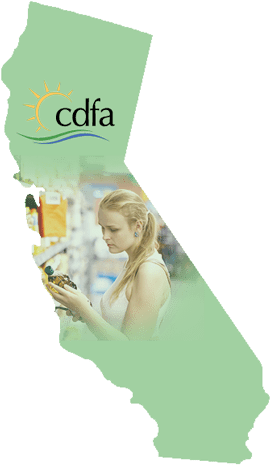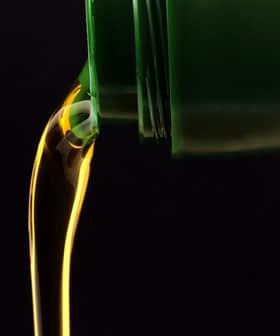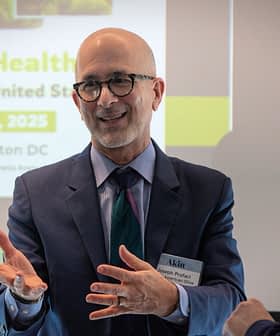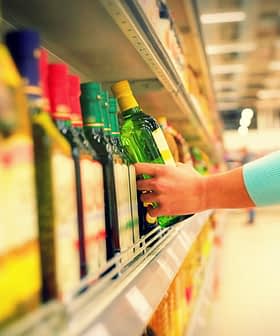Divergent Views on Proposed California Olive Oil Standards
The California Department of Food and Agriculture is reviewing proposed olive oil grading and labeling standards after a public hearing with 49 witnesses and numerous written comments. The new standards, recommended by the Olive Oil Commission of California, aim to enhance the competitiveness of the state’s olive oil industry and improve consumer confidence in quality. The CDFA will make a final decision on the recommendations, which include new grading definitions and labeling restrictions, after analyzing public feedback.
The California Department of Food and Agriculture (CDFA) is facing a big workload. At a public hearing on July 15 in Sacramento, California, 49 witnesses testified on proposed olive oil grading and labeling standards, and many others submitted written comments. The CDFA must now sift through and analyze it all and make an official decision on recommendations proposed by the new Olive Oil Commission of California (OOCC). Had the public comments been heavily weighted in favor or in opposition to the standards, CDFA’s job would be easy, but there were strong opinions on both sides of the fence.

Earlier this year, the OOCC was created to enhance the competitiveness of California’s olive oil industry and improve consumer confidence in olive oil quality. Commission board members, elected from producers and handlers from across the state’s olive growing regions, recently submitted their grading and labeling recommendations to the CDFA. CDFA’s review process includes a public written comment period and a public hearing before the Agriculture Secretary will issue a final decision on whether the recommendations will become mandatory.
Kimberly Houlding, executive director of the American Olive Oil Producers Association commended the OOCC’s work. “The Commission did a very thorough job in making sure the standards are scientifically sound and make sense for California producers.”
Proponents of the proposed standards point to other California agricultural commodities that have benefited from enforceable standards. Jamie Johansson of the California Farm Bureau Federation noted that standards exist for 31 state commodities and they “improve customer satisfaction by ensuring only high quality products are marketed.”
Michael Kiey of Ramos & Kley Ranches believes that the standards will give consumers confidence in their purchases. “These are assurances that as a grower I am willing to pay for through my assessment dollars and [are] necessary for California to retain its reputation for producing high quality olive oil,” noted Kley in his written submission.
The proposed standards deviate in some areas from the International Olive Council and USDA standards. Supporters see the differences as strengths of the proposal. Dr. Rodney Mailer of the Australian Oils Research Laboratory indicated that European standards, including those setting fatty acid and sterol limits, were based on Mediterranean conditions and do not consider regional and varietal differences. The European standards discriminate against oil produced in other areas, such as the U.S., Australia, South Africa and South America, said Mailer.
Without labelling standards, product grade standards and product testing, the ruse will continue.
Bruce Golino, chair of the OOCC Standards Committee explained that under existing standards, some high quality California olive oils would not pass the purity test. “One of the first decisions we made was that no olive oil should be excluded because of its natural chemistry… we also understood the inherent illogic and unfairness of telling a grower who, for instance, happened to grow Koroneiki olives in Petaluma CA that the oil that came from those olives made in accordance with the standard was not olive oil. Yet, that is exactly what adopting a traditional standard would mean for California producers.”
Dan Flynn, executive director of the UC Davis Olive Center claims that importer concerns over changes in the fatty acid and sterol profiles are a “red herring.” Importers assume that existing IOC standards have adequately guarded against fraud, “which is clearly not the case.” Flynn also pointed out a new consumer protection measure in the proposed standard requiring traceability of the oil through its various processing stages.
Proposed labeling standards would prohibit the use of terms such as “Pure” and “Extra Light” because they mislead consumers. According to Dick Neilsen, general manager of McEvoy Ranch and a member of the OOCC, “Olive oils labeled “Pure”, a powerful word to American consumers, are refined, stripped of flavor and nutrients. Other labels read “Lite” and “Extra Lite”, imply few calories. Olive oils mislabeled “Extra Virgin” are found in almost all U.S. supermarkets, stores and shops. The fact is that these labels are intentionally misleading to the consumers and without labelling standards, product grade standards and product testing, the ruse will continue.”
The standards also set new grading definitions and recommend not using the words “olive oil” when referring to refined-olive oil blends or olive pomace oil. “Consumers and the trade need to understand the important quality difference between extra virgin/virgin olive oils, ‘the oils as they come from the olive,’ compared with the lower grade refined and pomace oils, ‘industrial manufactured olive oils’. The proposed California olive industry standard does this better than any of its many predecessors,” testified Paul Miller, president of the Australian Olive Association.
Opponents of the recommended grade and labeling standards do not believe that the requirements will achieve their desired objectives. The standard has been “sloppily and hurriedly patched together” and “it appears that supporters of the standard intend to favor the only grade commercially sold by local producers, extra virgin olive oil, by attempting to attach negative-sounding technical verbiage to lower grades, ” said Eryn Balch, Executive Vice President of the National American Olive Oil Association.
The idea of having differing sets of standards is viewed by some as confusing and inefficient. The International Olive Council’s (IOC) executive director Jean-Louis Barjol wrote that his organization administers the mandatory standards for member countries (the U.S. is not a member). The member nations provide 96 percent of the world’s olive oil exports. “…introducing new grade names, grade definitions and parameters that differ from those used by 96 percent of world exports would create consumer confusion.”
Written comments from Costco, ACME Food Sales, and Food Trading Specialties indicated that the proposed standards would cause a “significant burden” on the companies who would have to sell the same products under different names or change naming conventions. “The standards proposed by the Commission are inconsistent with well-established, commercially-accepted industry standards and will create disruption and increase confusion for both buyers and consumers.”
Challengers also dispute the validity of the science behind some of the standards. For example, the recommendations add new measures of quality, such as testing PPP and DAGs levels. “…the proven science supporting the existing IOC chemical test standards is much more comprehensive in identifying adulteration. Limiting chemical testing to primarily PPP and DAGs, will not detect adulteration and requires more scientific validation on effectiveness,” wrote John Akeson, CEO of Deoleo USA.
Although any standards adopted by the state would only apply to growers and handlers in California (who produce or handle more than 5,000 gallons per year), some see the potential for the standards to spread to domestic producers and importers. Eryn Balch, executive vice president of the North American Olive Oil Association (NAOOA), drew attention to recent lobbying efforts and press reports that indicate that advocates of the proposed standard will ultimately want the new rules to apply to all olive oils sold domestically. “The NAOOA does not see any productive results that would come from implementing the proposed standard, but can easily foresee the intrusive, burdensome, anti-competitive situation that would result for the overwhelming majority of olive oil suppliers, not just in California but across the U.S.,” Balch stated.
Mauro Battocchi from the European Union Delegation to the U.S. echoed the NAOOA’s concerns from an importer perspective. “While the proposed standards will only apply to California producers and handlers over a certain amount of production, the EU remains deeply concerned about possible implications to trade in the short and long term.”
Patricia Darragh, executive director of the California Olive Oil Council, said that she was perplexed by opposition speculation about how widespread the proposed standards could become. California accounts for only about three percent of U.S. oil consumption, so it is “blatantly untrue” that a goal of the supporters is to prevent imports, said Darragh. “California oil is unique — it is almost exclusively a premium product. The standards are directed solely at California producers.”
The CDFA will accept additional public comments until 4:00 PM (PST) on July 29. The department anticipates making a decision on the Commission recommendations within 45 days after the comment period closes. More information on the CDFA hearing and the process can be obtained on the CDFA website.









